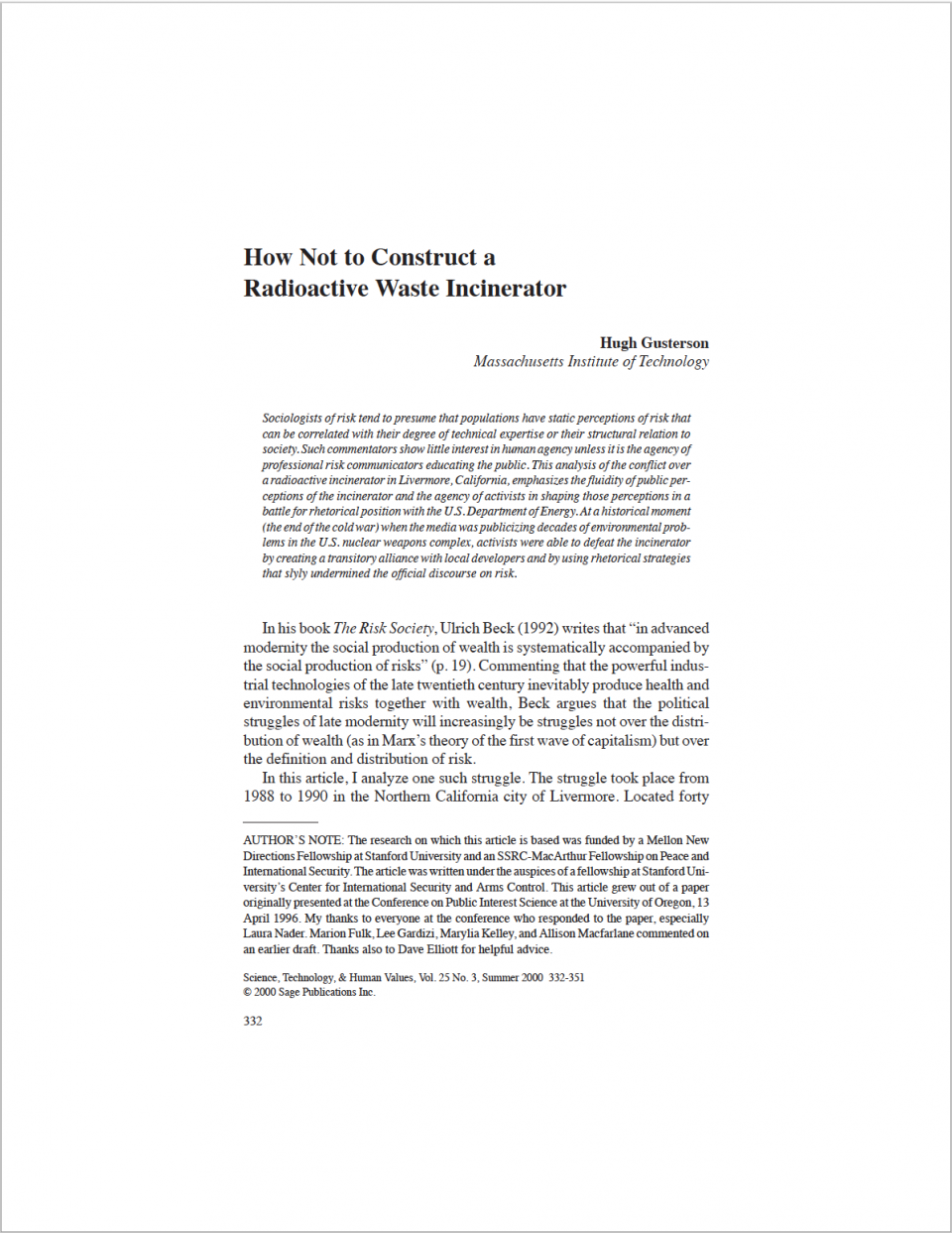ARTICLE ABSTRACT: Sociologists of risk tend to presume that populations have static perceptions of risk that can be correlated with their degree of technical expertise or their structural relation to society. Such commentators show little interest in human agency unless it is the agency of professional risk communicators educating the public. This analysis of the conflict over a radioactive incinerator in Livermore, California, emphasizes the fluidity of public perceptions of the incinerator and the agency of activists in shaping those perceptions in a battle for rhetorical position with the U.S. Department of Energy. At a historical moment (the end of the cold war) when the media was publicizing decades of environmental problems in the U.S. nuclear weapons complex, activists were able to defeat the incinerator by creating a transitory alliance with local developers and by using rhetorical strategies that slyly undermined the official discourse on risk.

Hugh Gusterson, "2000. Gusterson. "How Not to Construct a Radioactive Waste Incinerator"", contributed by James Adams, STS Infrastructures, Platform for Experimental Collaborative Ethnography, last modified 7 June 2018, accessed 3 April 2025. https://stsinfrastructures.org/content/2000-gusterson-how-not-construct-radioactive-waste-incinerator
Critical Commentary
In this 2000 article, Hugh Gusterson discusses the fluidity of public assessments of risk regarding the construction of a radioactive waste incinerator in Livermore, California. Gusterson emphasizes the agency of activists in shaping public opinion and preempting the construction of the incinerator.